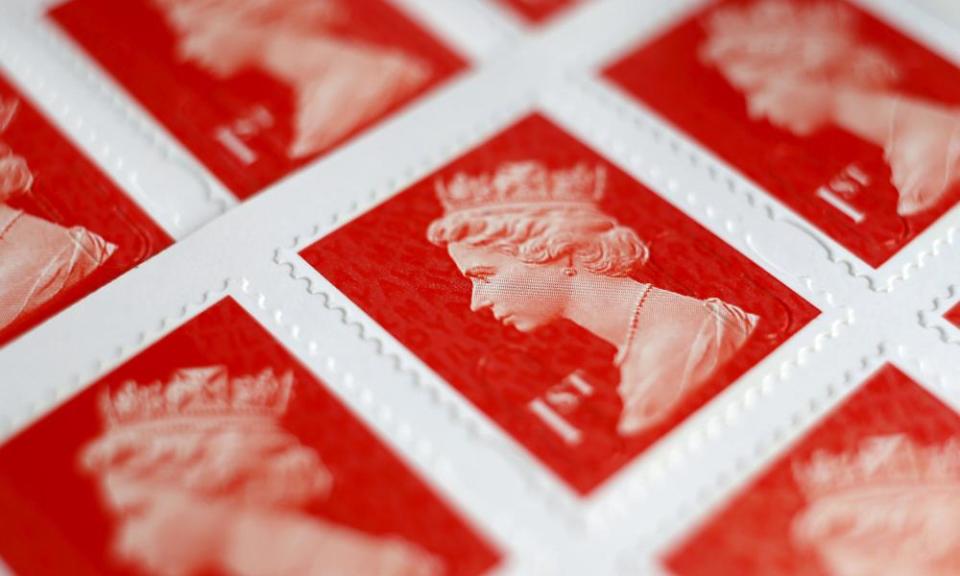Royal Mail stamp swap customers were sent fraud warnings

Some Royal Mail customers who have used an official scheme to swap their old stamps for new barcoded replacements have been warned they risk committing fraud.
Since the start of August, only new stamps with scannable barcodes are valid for postage, and consumers are being invited to replace out-of-date books of stamps for free under Royal Mail’s Stamp Swap Out scheme.
However, Royal Mail has apparently rejected scores of applications, claiming that stamps that customers say were bought from supermarkets and post offices were used or fake.
Some of the new barcoded stamps have also been declared counterfeit by Royal Mail, which has issued fines to unwitting recipients. In March, constituents in Brighton were charged a £2.50 fine to receive Labour party leaflets after Royal Mail insisted the party had used fake stamps for a campaign mailshot. Critics have accused the company of ignoring problems with its barcode scanning technology.
The backdrop to this is that Royal Mail introduced barcodes to its stamps in February 2022 as part of what it described as an extensive modernisation drive. It means regular stamps without a barcode are now no longer valid for postage. The deadline was initially 31 January 2023 but then a six-month grace period, until 31 July this year, was announced, during which mail posted with the “retired” stamps was delivered as normal.
Unfortunately, if you do still have some old stamps, you can’t just take them to your nearest post office and swap them for new ones. You need to fill in a form and send them back to Royal Mail. However, the good news is that there is now no end date as to when you need to swap out your non-barcoded stamps by.
Customers who contacted Guardian Money say they have been accused of potential criminality after their stamps were confiscated by Royal Mail, which insisted they had already been used or were counterfeit.
Some who sent in high-value batches say they have been left hundreds of pounds out of pocket.
Sheila Spelsby from London says she was informed that it was a criminal offence to use fraudulent stamps when she attempted to replace a batch of seven first- and second-class stamps under the scheme.
“Royal Mail claims that my stamps, which were bought from my local post office, are ‘either used or fraudulent’ – they should surely be able to state which,” she says.
“When I complained, the stamps were inspected again, with the same conclusion. I then complained to the supposedly independent Postal Review Panel [the final stage in Royal Mail’s complaints handling process], which confirmed that my ‘six first-class stamps were either used or fraudulent’. I did not send six first-class stamps! I was told that as it is a criminal offence to use fraudulent stamps, they would not be returned to me. I now stand accused of criminal behaviour while Royal Mail confiscates the evidence.”
Helen Lee from Surrey submitted a book of old stamps bought from a supermarket in May, and waited six weeks for a response – the scheme aims to process applications within seven working days. Royal Mail refused to replace or return them in a generic letter, stating that they were either used or fake. She, too, complained to the Postal Review Panel, which rejected her appeal and warned that using counterfeit stamps is a crime.
“Two family members have recently found that post has failed to reach the recipients because the new barcoded stamps they had used were apparently counterfeit,” she says. “I find it hard to believe that there are this many counterfeit stamps in circulation, and even if there are, it is not right that customers who have bought stamps from legitimate sources are being penalised in this way.”
Last November, Royal Mail was forced to apologise after 3,000 customers were erroneously told they had neglected to enclose their stamps with their Stamp Swap Out application. Others complained that they received an inadequate number of stamps in return – or none at all. One charity was left empty-handed after submitting 500 stamps worth £350 and receiving only 11 in return.
Royal Mail did not wish to comment on how many applications have been refused because of suspected forgeries, or on complaints that barcoded stamps have been dismissed as fakes.
It told Guardian Money that customers must produce receipts and the name and address of the retailer to prove that their confiscated stamps were bought legitimately.
“We have a robust, multistage process in place when assessing whether non-barcoded stamps sent for swap-out are genuine. This includes a thorough examination using specialist equipment, then a follow-up inspection by a skilled member of the team, before any stamp is marked as counterfeit or pre-used.”

 Yahoo Finance
Yahoo Finance 